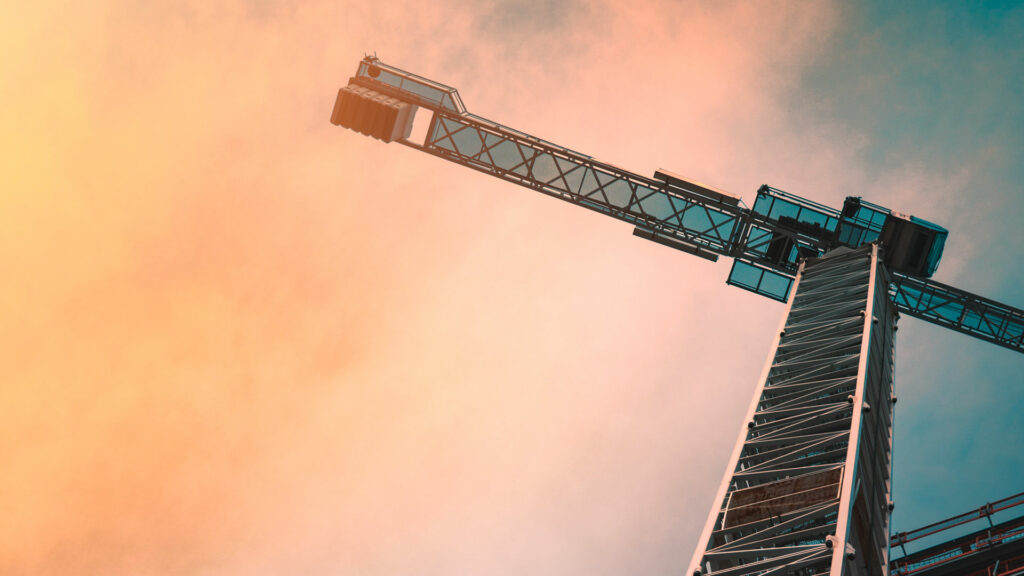The EU Taxonomy is reshaping the approach to sustainability in the real estate and construction industries. The Commission Delegated Regulation (EU) 2021/2139 of June 4, 2021, supplementing Regulation (EU) 2020/852, establishes technical screening criteria to determine when an economic activity significantly contributes to climate change mitigation or adaptation, while ensuring no significant harm to other environmental objectives.
The delegated act plays a crucial role in guiding stakeholders within the construction sector to make informed decisions aligned with the goals of the European Green Deal. It is important to note that this delegated act is a dynamic document designed to evolve over time in response to technological advancements and ongoing environmental challenges.
The criteria are reviewed regularly to ensure that new sectors and activities can be included in the scope as they emerge. This continuous adaptation allows the construction industry to stay at the forefront of sustainability, driving innovation and promoting the development of eco-friendly building practices, contributing positively to the goals of the European Green Deal for a greener, more resilient future.
Here we look at some concrete examples of projects impacted by the EU Taxonomy
- Hydropower-based electricity generation
Developing, operating, and maintaining electricity generation plants harnessing hydropower as a renewable energy source.
- District heating and cooling systems
Building, modernizing, and managing the infrastructure for heat and cold distribution networks, including pipelines, substations or heat exchangers.
- Wastewater collection and treatment systems
Designing, expanding, and maintaining centralized wastewater systems, encompassing both wastewater collection (sewer networks) and wastewater treatment facilities.
- Personal mobility and cycling logistics infrastructure
Constructing, upgrading, and operating infrastructure for personal mobility, including roads, motorway bridges, tunnels, and pedestrian and bicycle pathways, with provisions for electric assistance.
- Rail transport infrastructure development
Establishing, enhancing, and maintaining railway and underground railway lines, stations, terminals, service facilities, and safety and traffic management systems, including bridges and tunnels.
- Low-CO2 road and public transport infrastructure
Building, modernizing, and managing infrastructure for zero-emission road transport, local transportation systems without CO2 emissions, as well as transhipment infrastructure.
- Low-CO2 maritime infrastructure
Constructing, upgrading, and maintaining infrastructure for CO2 emission-free vessels and port-owned operations, including the operation and management of transhipment facilities.
In addition to the examples mentioned above – for more info, you can check this document (in German) – it’s critical to understand the impact of the EU Taxonomy on the construction of new buildings and the renovation of old ones.
The impact on newly constructed buildings

With the EU Taxonomy, buildings must adhere to environmentally sustainable principles and practices in their design, construction, and intended use. More in particular, these are the key points to take into account for new buildings:
1. The new building must not be purposed for fossil fuel extraction, storage, transportation, or production. The building’s energy consumption should meet or exceed the Nearly Zero-Energy Building (NZEB) standard defined by the Building Energy Performance Directive.
2. Builders should complete an environmental impact assessment to identify and mitigate potential adverse effects and avoid construction in ecologically sensitive areas.
3. It’s necessary to incorporate water-saving plumbing fixtures to enhance water efficiency.
4. The new constructions should be made using materials and components with minimal pollutant content. Implement strategies to minimize noise, dust, and pollutant emissions during the construction and maintenance phases.
5. A minimum of 70% of non-hazardous construction and demolition waste generated at the construction site is managed in alignment with the waste hierarchy and the EU Protocol on the Management of Construction and Demolition Waste. This includes re-use, recycling, and other material recovery methods, such as backfilling, where waste serves as a substitute for different materials.
Renovation of existing buildings
The EU Taxonomy doesn’t impact only new constructions, but also the works related to renovating existing buildings. Renovations must adhere to the Building Energy Performance Directive or achieve a 30% reduction in primary energy demand.
Moreover, the EU Taxonomy’s technical criteria for “climate change adaptation” aims to reduce risks by identifying and implementing suitable adaptation solutions. Compliance can be considered under the following circumstances:
- Boost resilience through nature-based adaptation solutions.
- Implement physical and non-physical solutions to reduce key climate risks.
- Identify climate risks through robust risk and vulnerability assessments.
- Base climate projections and assessments on best practices and available guidelines.
To be considered EU Taxonomy compliant, an activity must meet as well the DNSH (Do No Significant Harm) criteria, ensuring environmental objectives are not negatively affected by the work planned to renovate the existing buildings.
EU’s circular economy criteria for buildings
The EU has established technical circular economy criteria for buildings. In particular, the requirements introduced focus on prolonging the lifespan of materials, components, and facilities; enhancing building occupancy and utilization; promoting circular business models; and encouraging the use of low-carbon materials and efficient material consumption.
By doing so, the EU aims to foster a sustainable, resource-efficient future in the building sector. But to achieve that, real estate and construction companies need to evolve their approach to data, taking advantage of the latest technology advancements – we’ll see below how AI can help in that sense.
The EU Taxonomy verification process
Construction companies must assess their activities against specific criteria to determine their alignment with the EU Taxonomy. The essential verification questions to be addressed include the following:
1. Have technical evaluation criteria been established for the economic activity in question?
2. Does the economic activity substantially contribute to climate change mitigation and/or adaptation efforts?
3. Does the economic activity comply with the Do No Significant Harm (DNSH) criteria?
4. Does the activity adhere to the minimum safeguard regulations?
By dealing with these questions, construction companies can evaluate how much their activities align with the EU Taxonomy’s objectives and requirements.
How can AI help construction companies to support the whole EU Taxonomy process?
AI can significantly aid construction companies in the EU Taxonomy process in various different ways by significantly streamlining and simplifying the complicated compliance obligations that this involves – for example, by automating data analysis, optimizing resource efficiency, assessing climate risks, and supporting decision-making.
At Dydon AI, we have cutting-edge artificial intelligence solutions. Taxo Tool is a bespoke product specifically created to offer valuable assistance in multiple aspects of the EU Taxonomy process.
In particular, the Taxo Tool can automatically capture information and data from documents such as energy certificates or other relevant texts, significantly reducing the manual workload required and ensuring accurate, up-to-date records. This automated data capture simplifies the compliance process and helps construction companies identify areas for improvement more efficiently. It can also enable companies to calculate CO2 emissions when data are missing or unavailable.
Moreover, at Dydon AI, we can provide risk assessments for climate and geological risks, allowing companies to develop effective mitigation and adaptation strategies, and ensuring construction projects are accurately assessed for their environmental impact.
By leveraging the advanced capabilities of our solutions, if you are a company in the real estate and construction industries, you have the opportunity to effectively navigate the EU Taxonomy process and play a crucial part towards a more sustainable and climate-resilient future.
Get in touch with us for a free software demo, we are glad to answer all your questions on your specific industry.






